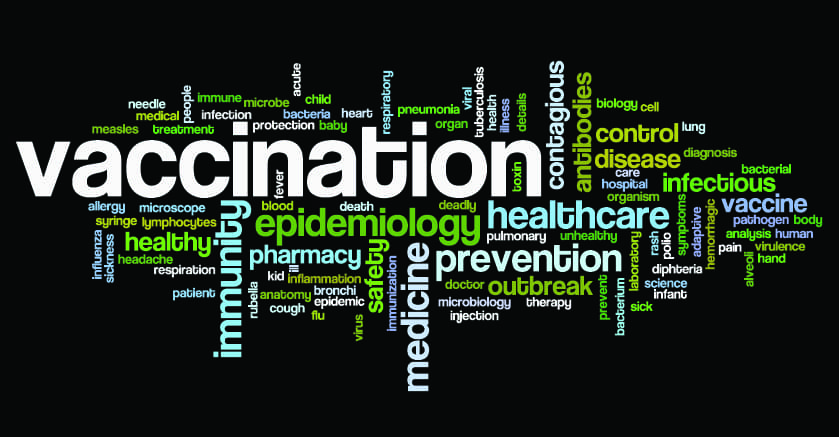In October 2015, the Advisory Committee on Immunization Practices (ACIP) approved the Recommended Adult Immunization Schedule: United States, 2016. This schedule provides a summary of ACIP recommendations for the use of vaccines routinely recommended for adults based on age, health conditions, occupation, lifestyle, and other indications. Additional vaccines may be needed for travel outside of the United States
The 2016 schedule includes a new recommendation on the use of 9-valent human papillomavirus vaccine (9vHPV) for females and males. In addition, there are recommendations for the use of quadrivalent HPV vaccine (4vHPV) and bivalent HPV vaccine (2vHPV) for females and 4vHPV for males. Also new is the recommendation that serogroup B meningococcal (MenB) vaccine should be administered to adults at risk. In addition, the 2016 schedule contains the information that MenB vaccine may be administered to adolescents and young adults aged 16 through 23 years (preferred age is 16 through 18 years) to provide short-term protection against most strains of MenB.
This article focuses on influenza; tetanus, diphtheria, and acellular pertussis (Tdap); shingles (zoster); and pneumococcal vaccines.
Influenza vaccine
Influenza vaccine is recommended annually for all persons age 6 months or older. Several different influenza vaccines are available, including inactivated influenza vaccine (IIV) in standard dose and high dose; intradermal inactivated influenza vaccine; live, attenuated intranasal spray vaccine; recombinant influenza vaccine (RIV); and an inactivated influenza vaccine that includes an adjuvant. Persons age 18 years or older with egg allergy of any severity may receive RIV because it does not contain any egg protein. Persons with hives-only allergy to eggs may receive IIV with additional safety measures.
Learn more about the influenza vaccine and the current influenza season at the CDC’s website.
Tdap vaccine
The Tdap vaccine helps prevent pertussis (whooping cough), which causes the most severe life-threatening illnesses in babies and young children. All adults in regular close contact (including parents, grandparents, and siblings over age 10) should get the Tdap vaccine. Women should receive the Tdap vaccine during the third trimester of every pregnancy to help protect themselves and their babies who cannot be vaccinated until age 2 months. Tdap vaccine can be administered regardless of when the last tetanus- or diphtheria-containing vaccine was administered. Learn more about the Tdap vaccine and combination vaccines.
Zoster vaccine
Zoster vaccine is recommended for adults age 60 or older. These adults should get the zoster vaccine even if they have had shingles before, because the vaccine will help prevent future bouts of shingles and post-herpetic neuralgia. They also should get the zoster vaccine regardless of whether they had chickenpox as children. Learn more about the zoster vaccine and facts you need to know.
Pneumococcal vaccine
There are two types of pneumococcal vaccine—a 13-valent pneumococcal conjugate vaccine (PCV13) and a 23-valent pneumococcal polysaccharide vaccine (PPSV23). PCV13 and PPSV23 are recommended for all adults 65 or older, and for adults 19 or older with certain risk factors for pneumococcal disease. For adults 65 or older, PCV13 should be given first, followed by PPSV23 at least 1 year later. For adults 19 or older with immune compromised conditions, functional or anatomical asplenia, cochlear implant, or cerebrospinal fluid leak, PCV13 should be given first, followed by PPSV at least 8 weeks later. Close attention should be given to vaccine indications, sequence, and intervals. The 2016 schedule has an algorithm to assist the healthcare provider to determine the sequence and intervals for pneumococcal vaccination. Learn more about the pneumococcal vaccines and other helpful information.
Improving coverage
Immunization coverage rates for adults are low in the United States. Influenza vaccination coverage for adults 18 or older during the 2014–2015 season was only 43.6%. In 2013, coverage for tetanus-containing vaccine (Td or Tdap in the previous 10 years) for adults 19 to 49 was 62.9%, 50 to 64 was 64.0%, and 65 or older was 56.4%; zoster vaccine coverage for adults 60 or older was only 24.2%; and pneumococcal vaccine coverage for adults 65 or older was 59.7%.
Healthcare providers have a central role in ensuring that their adult patients are up-to-date in their vaccinations and improving low vaccination coverage rates for adults. A strong predictor of an adult patient receiving needed vaccines is a recommendation by his or her healthcare provider. Therefore, it is important that all healthcare providers be familiar with the current adult immunization schedule and assess their adult patients for vaccination, recommend that they get the vaccines they need, and either administer the vaccines or refer them to a place where they can get the vaccines. Healthcare providers who administer vaccines also are encouraged to record their patients’ vaccinations in their state (or city) immunization information system (commonly known as vaccine registry) where available. View a list of contacts for immunization information systems throughout the United States.
Chad Rittle is an assistant professor, nursing faculty, at Chatham University in Pittsburgh, Pennsylvania, and a Pennsylvania State Nurses Association member.


















